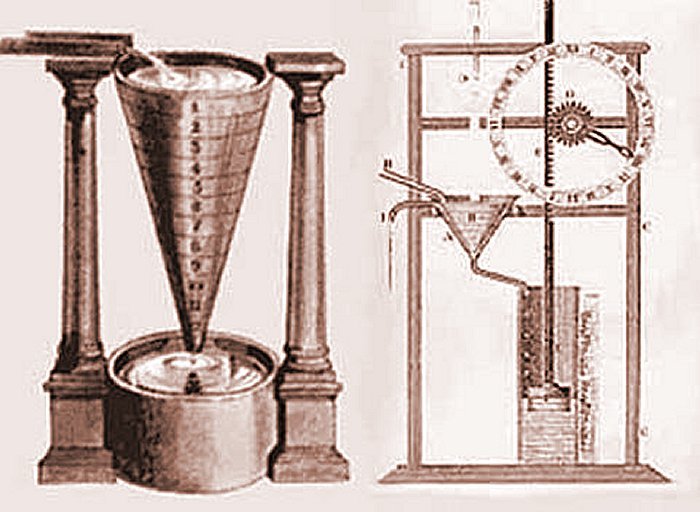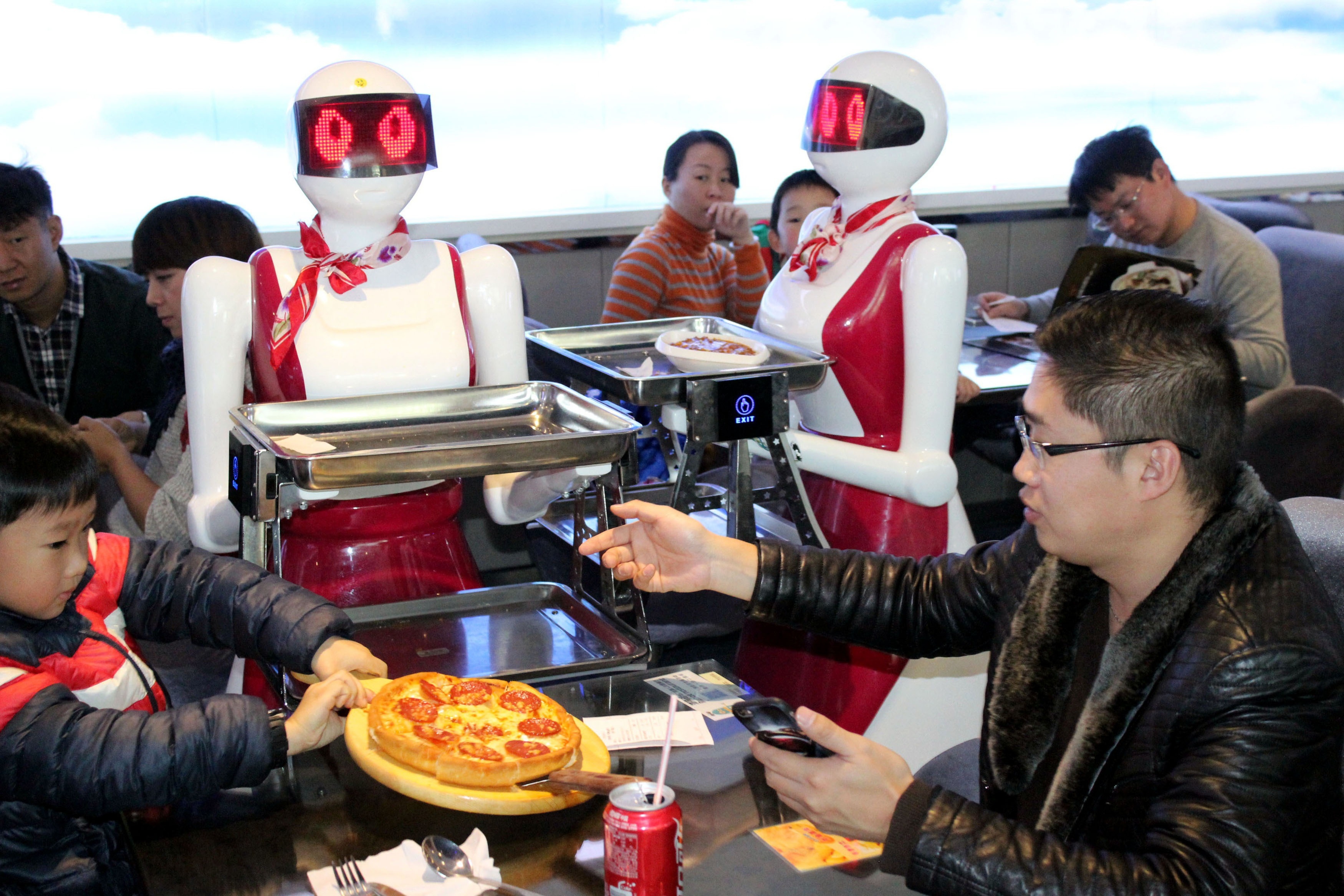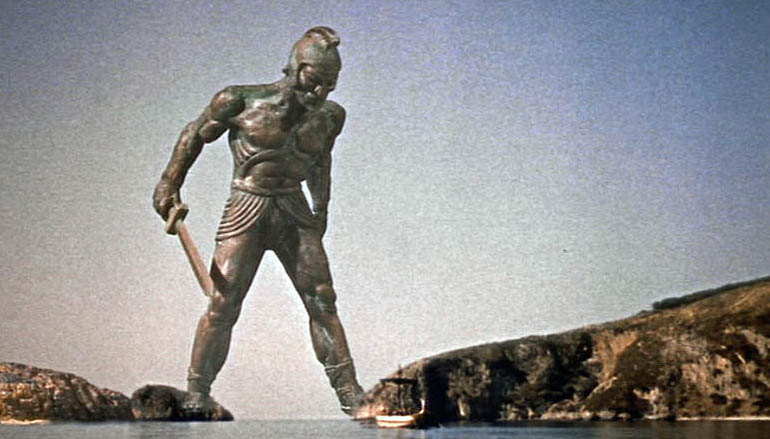Artificial Intelligence, or AI, has many forms. In its most tangible avatar, it is an entity with human-like abilities that operates independently of humans despite being created by them. In one word, robots!
Man has long had a love affair with robots, although they went by different names through the ages. But why this fascination with autonomous inventions? Perhaps it is the idea that he can play God by creating something that can subsist without his intervention. Or it could be the idea that intelligence is not exclusive to living creatures.
Whatever the motivation, man’s fascination with inanimate objects with human traits – and more often than not exhibiting superior capabilities – has spawned uncountable variations on this theme.
Mythical Robotic Creatures
The earliest recorded instances of robot-like creatures are from the Greek mythological stories of Cadmus and Pygmalion. The former is believed to have sown dragon teeth that sprouted into soldiers; the latter was a sculptor, one of whose creations sprung to life.
The Roman god of fire, Vulcan, known to the Greeks as Hephaestus, is said to have created golden handmaidens and three-legged tables that moved of their own volition.
In ancient Egypt, statues of gods were believed to be animated, and were often consulted by pharaohs, not unlike the oracles of ancient Greece. What’s interesting is that they believed that these divine statues had souls, which contradicts another belief that the human body was merely a component of the soul.
Chinese folklore is replete with tales of artificial humans and mechanical imitations of demons as well as animals. One story tells of Master Yan, a craftsman who created an automated humanoid that “performed various tricks” and even “started to flirt with the ladies in attendance” at the court of King Mu of Zhou around the 9th century BCE. The king was intrigued by the inner workings of the mechanical man and had “him” confiscated.
In India, the collection of folk stories known as Lokapannatti talks of an entire army of automated warriors that were eventually brought under the command of Emperor Ashoka the Great, representing a defeat of the fear of robots in one of its most ancient forms.
European legend also speaks of heads made of brass that could answer questions asked of them. There is even a legend of Albert Magnus creating a working android for domestic chores. The android was supposedly destroyed by Saint Thomas Aquinas for “disturbing his thought.” Robert Bacon is also credited with creating an automated brazen head, and medieval stories often contained animal-like and humanoid automata populating imaginary worlds.
Automata – The Precursors of Robots
In nearly every ancient culture, there are stories of automata in many forms, from animated everyday objects to life-like creatures made of gold, brass, bronze and other metals. But as we approach the post-classical era, the stories become more detailed in nature, and there are several instances of automata being detailed in drawings.
Consider the Alexandrians during the three hundred years preceding the birth of Christ. They built automata powered by steam or hydraulics and detailed them in their texts.

These skills were later passed on to the Byzantines and the Arabs, who built intricate water clocks along the line of those built by Alexandrians. In The Book of Knowledge of Ingenious Mechanical Devices by Al-Jazari dating around the 13th century CE, there are descriptions of segmental gears that made their appearance in “modern” European clocks nearly a century later.
In the late 15th century, Leonardo Da Vinci created a humanoid automaton in the form of a mechanical knight with movable upper limbs, head and jaw. Then came the flying iron eagle and fly built by Regiomontanus, also known as Johannes Müller von Königsberg, and the flying wooden beetle made by John Dee, advisor to Queen Elizabeth I and renowned mathematician, philosopher, astrologer, astronomer and alchemist.
The Birth of Robots
It was not until the early 20th century that the first true robots were born. Until then, the creations were merely automated mechanical entities that would display limited motor and other skills.
In the 1910s, radio-controlled weapons were deployed, and they were based on the electric remote-controlled boats first created by Nikola Tesla.
It was not until 1920, nearly a century ago, that the word “robot” was coined and used in a sci-fi play called Rossumovi Univerzální Roboti, subtitled as “Rossum’s Universal Robots” in English. The world “robot” became a part of the English language a year later.
The first real robots that were not purely movement-oriented made their appearance in the late 1930s; 1939, to be exact. A notable creation of the time were Elektro, a seven-foot robot that walked when given a voice command, and had a vocabulary of some 700 words. Elektro could move his arms and even had the ability to blow up balloons and smoke cigarettes.
Elektro was still mechanical, but that same year the first programmable electromechanical computer was designed and constructed by Konrad Zuse. Zuse later also created the first process control computer, the first commercial computer and the first programming language for computers.
Although Zuse was not a roboticist, his Nazi-German-sponsored work after 1939 set the tone for the world’s entry into the world of computers. Of note is the fact that despite the level of automation achieved with these inventions, artificial intelligence (AI) had yet to make its presence known in the world of robotics.
First Generation Robots
In the early 1940s, Isaac Asimov propounded his now-famous Three Laws of Robotics, later including a fourth or Zeroth law, as a result of which the word “robotics” was coined. The robots of the 1940s were electronic autonomous entities, such as the ones first introduced by William Grey Walter in England.
Around that time, an important dichotomy appeared in the approach to robotics. One school of thought, propounded by Walter and championed by robotics stalwarts like Rodney Brooks and Hans Moravec, was that brain processes must only be simulated with analogue electronics; the opposing view, put forward by equally brilliant thinkers like Alan Turing and John Von Neumann, leaned towards digital computation to simulate mental processes.
It was only in the 1950s that the use of artificial intelligence became well-known. Ironically, it was Walter who first spoke of intelligent agents, citing his own mechanical robots.
Walter employed conditioned reflex learning for his creations, but what would become the world’s first industrial robot in the mid-1950s was the “Unimate”, constructed by George Devol, the first iteration of which was sold to General Motors for their Inland Fisher Guide Plant in New Jersey in 1960, and installed the following year. Unimate was digitally controlled and was programmable.
The 1960s gave rise to a number of other industrial robotic arms, including the Rancho Arm, Unimation’s (founded by Devol and Joseph F. Engelberger) hydraulic robot, Marvin Minsky’s Tentacle Arm and the Stanford Arm.
These robotic arms changed the world of manufacturing forever. Interestingly, companies like Ford that were exploring the use of robots in their factories feared the ire of manual workers, and began using terms like “versatile transfer devices”, “universal transfer devices” and “programmed article transfer.” It was reminiscent of the Luddite movement that severely impacted the textile manufacturing industry in England during the Industrial Revolution.
The late 1960s. The Vietnam War. It set the tone for autonomous military systems. Sensor networks were deployed for the first time, comprising acoustic and seismic sensors, and landmines that were triggered by movement and sound. It was also when Shakey, the first mobile unit capable of reasoning about its surroundings, made its appearance.
The 1970s brought laser-guided missiles that later evolved into advanced missile guidance systems that used terminal guidance rather than the help of lasers or wires.
Meanwhile, twenty years of fascination with robots was bubbling in Japan, the home of Astro Boy, the poster boy for helpful robots. WABOT-1 was introduced in 1972, and had advanced mobility systems that used tactile sensors and a wide range of other receptors that allowed it to listen, talk, grasp objects and even gauge direction and measure distance. It is considered to be the first intelligent android.
The 1970s and 1980s saw a near-barrage of robotic arms and mobile robots like the Stanford Cart, the SCARA and the Silver Arm. The 80s also saw WABOT-2 with the capability of reading sheet music and accompanying a person on the organ. A six-legged robot called Genghis was showcased by the Massachusetts Institute of Technology, which was significant because of its low cost of production.
During the 1990s, the realm of surgery benefited from the Cyberknife, a radiosurgical system with robotic positioning and image-guided surgery at its heart. In the mid 1990s, there was RoboTuna, a fish-like creature originally designed to study the swimming movement of its biological namesake.
Then came Honda’s P2, which was the result of a ten-year initiative that began in 1986 as part of the automaker’s humanoid research program. It was also the first time robots went into space; the Sojourner successfully operated for 83 days on Mars as part of the Mars Pathfinder project. This was a first for robots because Sojourner naturally came across unpredictable terrain and objects in its path.
The field of robotics saw a spurt towards the end of the millennium, with creations like Sony’s AIBO, the robotic dog, the P3, Honda’s ASIMO and the Sony Dream Robots. The U.N. counted nearly three-quarters of a million industrial robots being deployed around the world at this time, with Japan having the majority of them.
The first decade of the new millennium witnessed the continued leaps in AI development in robotics. In April 2001, Global Hawk made the first unmanned trip across the Pacific, and Canadarm2, the Mobile Servicing System, was sent into space with the International Space Station.
Roomba, the famous robotic vacuum cleaner was launched by iRobot the following year. Opportunity and Spirit were sent to Mars, and had it not been for the dust storm in mid-2018, Opportunity might still be in operation. Communication was lost during the storm, so it might well be moving around and doing its job.
Around 2005 was when self-driving cars started appearing, and Honda released the second generation ASIMO. The same year saw Cornell University introduced the world’s first self-replicating robot that could make copies of its cuboid self. In 2006 Cornell launched a quadruped robot capable of learning to walk after being damaged. In 2007, the year the iPhone was first introduced, TOMY released i-sobot for entertainment. I-sobot was able to walk, punch and kick like a human.
Closer to present day, Sophia the “female” robot was granted citizenship in Saudi Arabia. This sparked controversy over the action because of the status that women are accorded in the Arab nation.
Robots of the Future
Today, there are robots that can jump and do backflips, robots that “sweat”, robots that can recognize specific people, understand contextual situations and a whole lot more.

Advancements in AI processes and the super-fast processing capabilities of modern silicon have largely been responsible for this sudden burst of creativity in robot-making, not to mention the surge in funding such projects.
Self-driving car technology is a good example of such investments. Once the stuff of science fiction, autonomous vehicle technology is now pursued by corporations and AI startups alike. According to CB Insights, there are no less than 46 corporations working on some form of autonomous vehicle R&D.
Billions of dollars are being poured annually into partnerships and acquisitions. Consolidation within any industry is a sign of maturity, and it’s already been happening for the self-driving car segment over the past few years.
The Fear that Lies Within
Amidst all this bustling commercial activity around artificial intelligence and robots, there’s a deep-seated fear of technology that has spurred widespread action against the uncontrolled development of robots beyond a certain capability limit.
But the fear appears to arise from humans misusing robots for their own gain, not necessarily from machines taking over the world – although there are several schools of thought that subscribe to that notion as well.
Will robots attempt to subdue and gain dominion over the human race in some distant future? There’s little agreement on when we will actually reach the technological singularity – the moment in history when machines will be capable of doing everything better than the most capable human. As one AI researcher puts it, it’s like worrying about overpopulation on Mars.
Nevertheless, the only real kind of fear is fear itself, to paraphrase Roosevelt; the “nameless, unreasoning, unjustified terror which paralyzes” has yet to set in, but the day will come when one robot will scare the bejeezus out of us because he begins to act eerily human. It is that type of robot that we fear – an ultraintelligent agent endowed with all the negative traits we’ve seen in humans through the millennia.
Even though we know that to be a very realistic outcome, we trudge on heedless towards the inevitable, satisfying ourselves with the egotistical emotions of being daring explorers wading into the unknown.
Will robots of the future be as evil as we’ve known ourselves to be? I’ll leave you with that nugget of food for thought.






